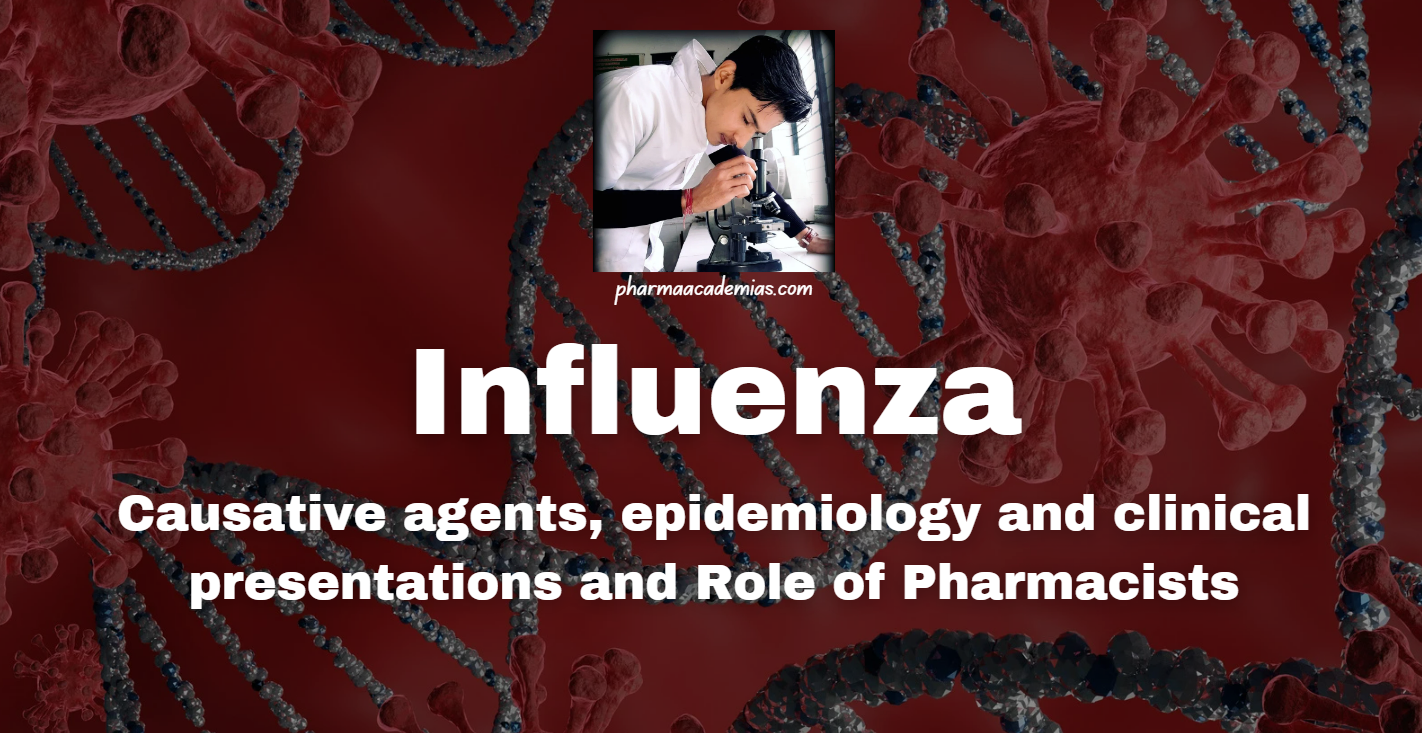Influenza, commonly known as the flu, is a contagious respiratory illness caused by influenza viruses. It can range from mild to severe and can lead to complications, particularly in vulnerable populations such as the elderly, young children, pregnant women, and individuals with underlying health conditions.
Causative Agents
Influenza viruses belong to the Orthomyxoviridae family and are categorized into types A, B, and C. Influenza A viruses are further classified into subtypes based on surface proteins hemagglutinin (H) and neuraminidase (N). Avian flu (caused by influenza A viruses that primarily infect birds), H1N1 (a subtype of influenza A virus), Severe Acute Respiratory Syndrome Coronavirus (SARS-CoV), Middle East Respiratory Syndrome Coronavirus (MERS-CoV), and Coronavirus Disease 2019 (COVID-19) are all caused by specific strains of influenza or coronaviruses.
Epidemiology
Influenza viruses circulate globally and cause seasonal outbreaks in temperate regions, primarily during winter. Avian flu primarily affects birds but can occasionally infect humans, with limited human-to-human transmission. H1N1 is a subtype of influenza A virus that caused a global pandemic in 2009 and continues to circulate as a seasonal flu virus. SARS and MERS are caused by coronaviruses that emerged in specific regions (SARS-CoV in 2002-2003 in China and MERS-CoV in 2012 in the Middle East) and primarily spread through close contact with infected individuals. COVID-19, caused by the novel coronavirus SARS-CoV-2, emerged in late 2019 and has since become a global pandemic, spreading through respiratory droplets and contact with contaminated surfaces.
Clinical Presentations
The clinical presentation of influenza, including avian flu, H1N1, SARS, MERS, and COVID-19, can vary but typically includes symptoms such as fever, cough, sore throat, runny or stuffy nose, body aches, fatigue, and headache. In severe cases, respiratory distress, pneumonia, acute respiratory distress syndrome (ARDS), organ failure, and death can occur, particularly in high-risk individuals.
Role of Pharmacists in Educating the Public in Prevention
Pharmacists are crucial in educating the public about preventing influenza and other respiratory infections, including avian flu, H1N1, SARS, MERS, and COVID-19. Their roles include:
1. Vaccination Education: Pharmacists can provide information about influenza vaccines, including seasonal flu shots and specific vaccines for novel strains such as H1N1. They can educate individuals and communities about the importance of annual flu vaccination to prevent illness and reduce transmission.
2. Promoting Hygiene Practices: Pharmacists can promote proper hand hygiene, respiratory etiquette (covering coughs and sneezes), and regular cleaning and disinfection of frequently touched surfaces to reduce the spread of influenza and other respiratory viruses.
3. Identifying High-Risk Individuals: Pharmacists can identify individuals at higher risk of complications from influenza or other respiratory infections, such as the elderly, young children, pregnant women, and individuals with underlying health conditions. They can provide tailored advice on prevention and management.
4. Dispelling Myths and Misinformation: Pharmacists can address misinformation and misconceptions about influenza, avian flu, H1N1, SARS, MERS, and COVID-19, providing accurate information based on scientific evidence to help individuals make informed decisions about prevention and treatment.
5. Community Outreach and Education: Pharmacists can engage in community outreach efforts to raise awareness about influenza prevention and other respiratory infections, conduct educational sessions in schools, workplaces, and community centers, and collaborate with healthcare providers and public health agencies to promote vaccination and disease prevention.
Pharmacists are critical in educating the public about preventing influenza and other respiratory infections, including avian flu, H1N1, SARS, MERS, and COVID-19. Through their expertise and community engagement, pharmacists contribute to efforts to protect public health and reduce the impact of these contagious respiratory illnesses.

